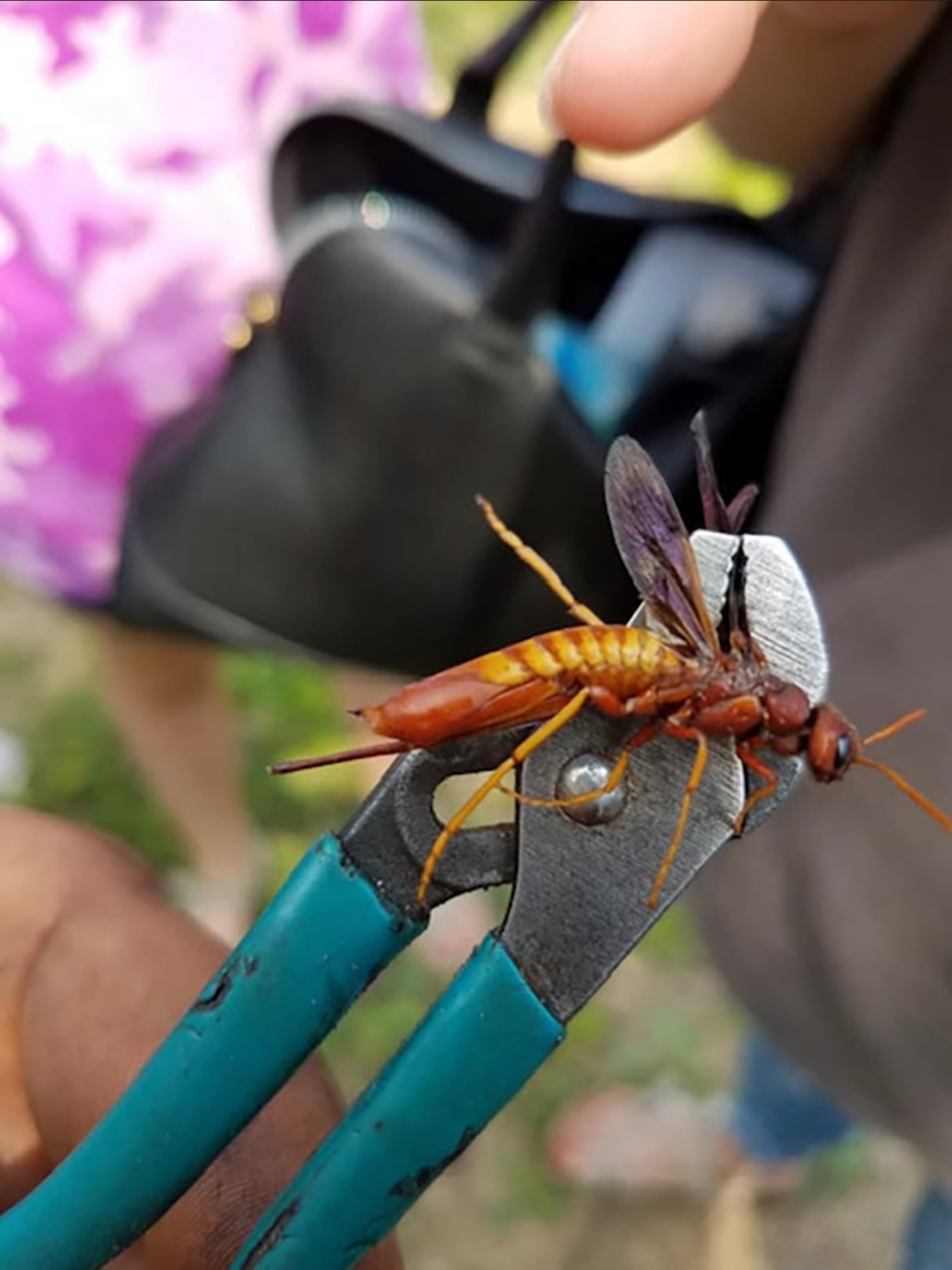What's Hot at the PPDL
June 20, 2019
Wasps May Not Be As Fearsome As They Appear
T.J. Gibb, Ph.D, Insect Diagnostician, Purdue University
There are many insects that evoke fear in the human psyche. Wasps are among the top and big ones can be especially intimidating. However, not all wasps are dangerous and in fact many cannot even sting. Wood wasps are an example. They can be up to two inches in length and most have a long abdomen with a characteristic spear-like plate on the last abdominal segment. But, as frightening as this may be, it is not a stinger, in fact, these wasps cannot produce venom nor can they sting.

Social media is currently abuzz (pardon the pun) regarding a wasp that is being dubbed the Asian hornet. Bees and wasps that live together in a colony and have a division of labor are called social. These have an earned reputation of aggressively stinging people or animals that make the mistake of coming too near the hive. However, just because a wasp is posted on social media does not make it a social wasp. The photo currently circulating is actually a pigeon horntail and is neither social nor Asian in origin. These wasps do not live in a colony nor do they sting.
Female horntails deposit their eggs in holes 'drilled' in the bark of dead, dying or recently-felled trees. The larvae hatch and bore deeper into the tree, living there for up to two years before they pupate. When adults emerge, they may leave a small exit hole but if the timber is processed into lumber some evidence of tunneling will be apparent. Even so, horntail wasps are seldom in sufficient numbers to be considered serious pests.
Bottom line is that one should not always put a lot of stock in social media posts and a fearsome looking wasps wrestling with a pair of Channellock pliers is not always what it seems.

